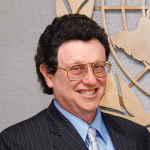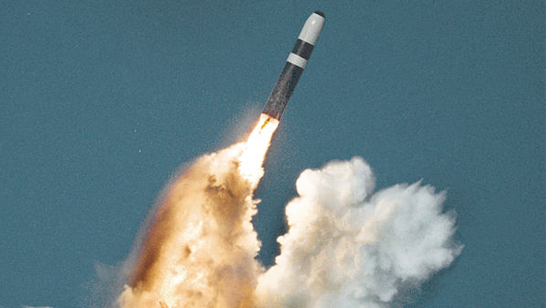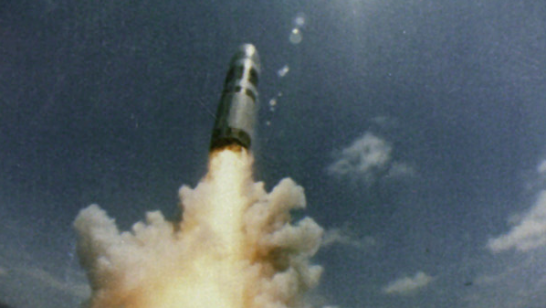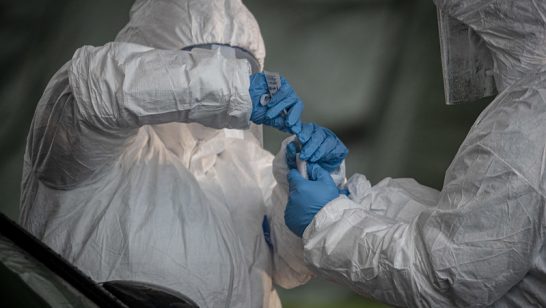
Radiological weapons (RW) are devices that are intended to disperse radioactive material in the absence of a nuclear detonation. The concept is an old one and first appeared at almost the same time in both the May 1941 science fiction story “Unsatisfactory Solution” by Robert Heinlein and in the Report of the Uranium Committee to the president of the U.S. National Academy of Sciences. Both the story and the government report envisaged the use of radioactive dust carried by airplanes to be scattered over enemy territory. In the story, production of RW was depicted as a possible means by which the threat of its use could put an end to war. In the government report, RW were regarded as the first of three possible military aspects of atomic fission, the other two being a power source for submarines and “violently explosive bombs.”
Today, the origins of the concept of RW have largely been forgotten. Indeed, since 9/11, radiological weapons have been associated mainly with non-state actors, who may not have the means or motivations to acquire and use far more lethal nuclear explosives. A fixation on the very real dangers posed by nuclear terrorism, however, should not obscure the risks that states also may again pursue radiological weapons.
As the authors have documented in a recent article in International Security, the United States and the Soviet Union both developed and tested RW extensively in parallel with their post-World War II nuclear weapons and chemical weapons programs. Although both countries decided to discontinue work on radiological weapons by the late 1950s, that outcome was by no means preordained and was the result of a combination of technical, economic, bureaucratic-political, and military considerations, including often faulty intelligence about the adversary’s RW capabilities.
We now know that the nuclear superpowers were not alone in their quest for RW. The United Kingdom, for example, explored a variety of RW options in the immediate post-war period, and it appears to have launched a developmental program in 1948 that continued into at least the early 1950s. Although much of the UK program remains shrouded in secrecy, one of the figures who was familiar with it was Klaus Fuchs, who before his arrest as a Soviet spy in February 1950 had served as a senior scientist at the UK’s Atomic Energy Research Establishment.
Another state that made significant investments in RW, alongside its nuclear and chemical weapons programs, was Iraq, which conducted multiple RW tests that were unknown to the U.S. intelligence community prior to the Gulf War. There also is circumstantial evidence that Egypt sought to develop RW and missile delivery systems in the early 1960s in collaboration with German scientists and technicians, and that North Korea may have contemplated, if not actively pursued, RW before obtaining a more robust nuclear weapons capability.
If the good news is that none of these actual and purported RW programs led to the deployment of operational weapons, the less encouraging news is that one cannot exclude the possibility that a number of countries today are exploring an RW option or may choose to do so in the near future. This potential is likely increased due to the paucity of information that is publicly available about the major drivers and impediments to RW production and use.
This situation, for example, is present in Russia today where, despite its own unsuccessful history with RW, Moscow appears intent on developing new advanced nuclear weapons designed to maximize radioactive contamination. One such weapon system, trumpeted by President Putin in his March 2018 address to the Russian Federal Assembly, is the high-speed “Poseidon” underwater drone, reportedly designed to strike coastal targets with a nuclear warhead encased in a cobalt shell. In light of this development, and in the absence of any existing multilateral arms control measures that apply to RW, it is important to consider possible new mechanisms, including legally binding restraints, to deter the production and use of radiological weapons.
One potential approach that merits serious consideration is informed by the important but largely forgotten joint effort by the United States and the Soviet Union in the 1970s to prohibit RW. That effort involved submission by the two superpowers of a draft treaty on the subject to the Committee on Disarmament (CD) in Geneva in July 1979. The proposal failed to gain the necessary support to be adopted at the time due to a variety of circumstances, including its scope and definitional issues. Also, as state-level RW pursuits were classified and their extent was unknown, a number of delegations appeared to attach a low priority to the issue. In addition, the question of whether the prohibition on RW should apply to attacks on nuclear facilities was contentious and took on special importance following the Israeli attack on the Iraqi Osirak nuclear reactor in June 1981.
Despite these past difficulties, it may be opportune to revive the initiative to ban radiological weapons today, perhaps in the context of the P-5 Process. This forum for nuclear disarmament consultations among the United States, Russia, China, France, and the United Kingdom has been ongoing since 2009 but has generated few tangible results to date. Several P-5 members previously have expressed interest in the idea of an RW prohibition as a means to demonstrate their continuing commitment to nuclear disarmament at a time when other arms control efforts appear stalled. Such an initiative would be especially timely in advance of the postponed Tenth NPT Review Conference, which has been rescheduled to convene in New York in August 2021. While P-5 renunciation of RW would fall well short of a legally binding treaty, it would reinforce the norm against one form of radiological warfare. This modest step would represent a not inconsequential achievement 75 years after the bombing of Hiroshima and Nagasaki and 50 years following the entry-into-force of the NPT.
The opinions articulated above represent the views of the author(s), and do not necessarily reflect the position of the European Leadership Network or any of its members. The ELN’s aim is to encourage debates that will help develop Europe’s capacity to address the pressing foreign, defence, and security policy challenges of our time.
Image: Flickr, New York National Guard





